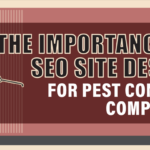Top Challenges and Security Tips in Cloud Security
Cloud Security
Cloud security is the practice of securing data stored online via cloud computing platforms from theft, deletion, and leakage. Methods of providing cloud security include tokenization, virtual private networks, penetration testing, obfuscation, and web application firewalls. Cloud security is another part of cybersecurity and it has become essential for many users who are concerned about the safety of the data they store online. Data that is kept on the cloud can be vulnerable and are expected to become a security threat, especially for the data owner.
Top Cloud Security Challenges: –
Lack of Tracking and Visibility – In the IaaS model, cloud providers have full root access over the infrastructure layer and they never expose Xfinity Wifi speed infrastructure to their consumers. Lack of visibility is further extended in SaaS and PaaS cloud models. Cloud customers cannot effectively evaluate and identify cloud assets or visualize cloud environments.
Changing Workloads – Cloud assets are much decommissioned dynamically. Earlier tools are incapable of enforcing protection in constantly changing workloads.
DevSecOps, DevOps, and Automation – Organizations that are embraced with automated DevOps Ci/CD must ensure proper security controls. These security controls are embedded in code and templates earlier in the development cycle. Cloud Security changes are applied after a small workload is deployed in a production line that is undermined by the developers, security experts under the organization’s security posture.
Granular Privilege and Key Management – Cloud user roles are configured and implemented very loosely. Granting extensive privileges beyond what exactly is required or intended. One common example is giving database read and write permissions to users who have no business need to add or delete database assets.
Boosted Attack Surface – The public Cloud Hosting India server environment has become a highly engaging attack surface for cybercriminals who exploit poor configuration to access and disrupt workloads and data in the cloud. Zero-Day, malware, and many other malicious threats have become an actual day-to-day reality.
Complex Environments – Managing cloud environments in a consistent way, especially in hybrid and multi-cloud environments is favored by different enterprises these days to work seamlessly fast across public cloud providers, private cloud providers, and on-premise deployments. This includes branch office edge protection for distributed organizations.
Cloud Compliance and Governance – All cloud market-leading providers have aligned themselves with the industry-certified accreditation programs such as – NIST 800-53, HIPAA, PCI 3.2, and GDPR. However, customers should also ensure that their workloads are compliant with accreditation programs. Giving poor visibility as well as the dynamics of the Cyfuture Cloud environment, the compliance audit process becomes close to achieve consistent compliance checks and issue real-time alerts about misconfigurations.
Cloud Security Tools
Many of the same tools that are used in on-promise environments should be used in the cloud. These tools include encryption, IAM and single sign-on (SSO), data loss prevention (DLP), public key infrastructure (PKI), and detection systems (IPSec/IDSes).
Cloud security comprises of some specific security tools: –
- Cloud workload protection platforms (CWPPs) – A CWPP is a security mechanism designed to protect workloads. For example – data, or VMs, applications – in a consistent manner.
- Cloud Access Security Brokers (CASBs) – A CASB is a tool or service that is implemented between cloud customers and cloud services to enforce security policies as a gatekeeper.
- Cloud Security Posture Management (CSPM) – CSPM is a group of security services and products that monitors cloud security and compliance issues that aim to combat cloud misconfigurations among other features.
- Secure Access SErvice Edge (SASE) and Zero-Trust Network Access (ZTNA) – are emerging as two popular cloud security models/ frameworks.
Security-as-a-Service – shortened to SaaS or SECaaS is a subset of software-as-a-service the cloud security alliance (CSA) defined SECaaS categories that are as follows: –
- Web Security
- Email Security
- DLP (Data Leakage Prevention)
- Security Assessments
- Intrusion Management
- Security Information and Event Management (SIEM)
- Encryption
- BC/ Disaster Recovery (BCDR)
- Network Security
This also includes services such as FaaS (Firewall-as-a-Service), cloud-based Virtual Private Networks (VPNs), and Key Management-as-a-Service (KMaaS).
Top Tips to Secure your Cloud Data: –
The steps to secure data in the cloud vary from factors that include sensitivity and type of the data that needs to be protected, cloud architecture, accessibility of built-in and third-party tools to access the data. Some of the best practices include to secure business data in the cloud are: –
- Encrypt cloud data at rest, data that is in motion, and in use.
- Use two-factor authentication (2FA) or multifactor authentication (MFA) to verify identity before granting access to a particular cloud.
- Isolate cloud data backups to prevent malicious threats.
- Adopt cloud edge security protection, including firewalls, and anti-malware.
- Ensure your data location control and visibility to identify where the cloud data resides. This implements restrictions on data that can be copied to other locations like – inside or outside the cloud.
- Log and monitor all aspects of data access, changes, and additions.
Cloud Security Best Practices: –
These are separate SaaS, PaaS, and IaaS best practices. Organizations should also comply with a number of general cloud security best practices that include the following: –
- Understand the shared responsibility model, including the responsibilities of CSPs and the security team.
- Choose CSPs wisely that what security controls they offer, review contracts, and service level agreements (SLAs) diligently.
- Adopt a strong, granular IAM policy to control who has access to what type of access.
- Encrypt cloud data that is in motion, in use, and in rest.
- Employ the principle of least privilege (POLP), Strong passwords with 2FA and MFA.
- Understand cloud compliance requirements and regulations.
- Conduct information/ security awareness programs in the form of seminars, functions, and meetings for employees, third-party partners. This will help organizations to stay vigilant.
Conclusion: –
It is important to establish communications between in-house and IT staff. In-house staff should subscribe to monitor, and digest CSP’s security bulletin stream. A well-documented communication channel must be established to handle security incidents. For best cloud security practices follow the above tips. Meanwhile, you can also check out the best cloud hosting plans in India by Go4hosting.












